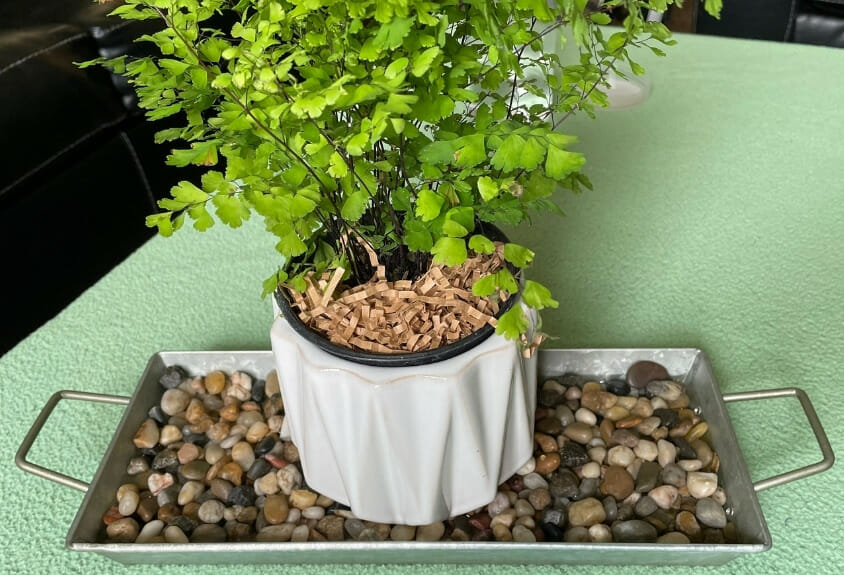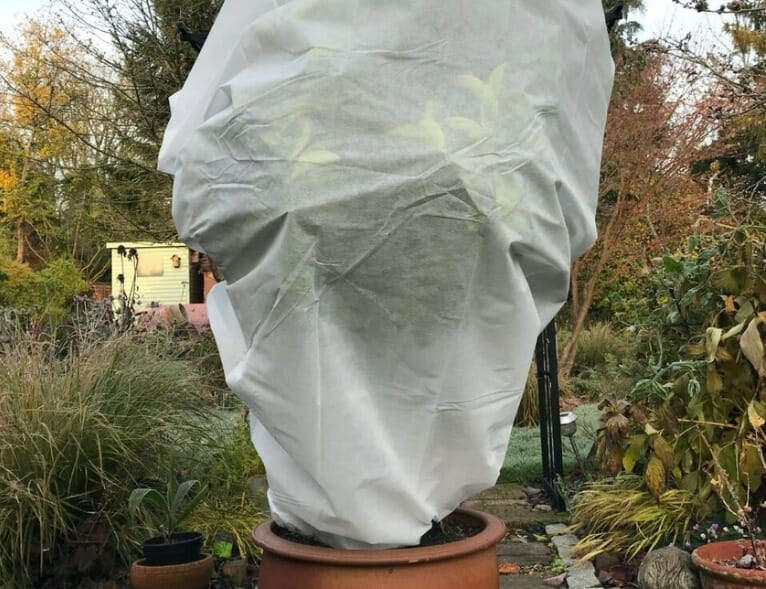It is that time of the year when the plants start to look really unhappy with the coming chilly winds. If you are an avid plant lover, you must know that taking care of plants in winter is more challenging than in summer. You need to keep everything in balance, from the light conditions of plants to the humidity level in winter. So, if you are struggling to take care of your plants and worried about how to keep indoor plants alive in winter, we got you covered. This article will help you to keep your plants thriving this winter!

10 Easy Tips For Saving Your Plants in Winter:
Here are some easy tips for saving your plants and keeping them alive in winter.
Tip 1: Water enough to keep it Breathing
It may surprise you, but plants in winter don’t need much water. Because plants’ growth rate is slow in winter, and some go dormant, excess water can lead to rotting. Well, every plant has different water needs. Plants like succulents and cacti stop growing, and 1-2 watering sessions are enough for the whole season. Whereas some require regular but reduced watering in winter, like tropical plants. You should keep checking the soil for dryness; however, dry soil isn’t a sufficient indication for watering. You should put your finger in the soil to check it. If it is wet, then your plants are all good to go. But if it’s not, there is a need for warm water as little quantity of warm water doesn’t harm the plant.

Tip 2: Don’t leave your plant in the dark
In winter, our homes get too cold and dark due to little or no sunlight presence. If you want to save your plants, move them closer to the windows to use the available sunlight. Artificial light from lamps and overhead lights will cause leaves to dry, curl, and die. You can also try using a grow light with full spectrum bulbs as they have low intensity and don’t harm your baby plants. Make sure the light from grow light shines on the plants for at least 12-14 hours a day.
Tip 3: Keep the Windows Closed
Another vital tip to keep indoor plants alive in winter is to seal your windows so no cold air penetrates your plants. Plants, specifically tropical plants, are highly sensitive to cold or freezing air because once they get in touch with it, their leaves start dropping continuously. This will take away the aesthetic look of your plant, making it look like an old and unmaintained fellow. So, to avoid this issue, ensure you don’t open your windows often or keep the plants away from areas where cold air is present.
Tip 4: Dust your plants off
Since light is an integral element that helps the plant in the photosynthesis process resulting in plant growth. Hence, dusting plants during winter allows them to absorb more light. For this purpose, you can use a soft, damp cloth as it removes all the accumulated dust, preventing your plant from getting colorless. You can also use a small plant vacuum cleaner to suck up any loose dirt or leaves on your floor and then use the vacuum’s hose attachment to clean off your plants. Cleaner plants look fresh and welcoming for your guests as well.

Tip 5: Fertilize Only When Needed
Yes, plants indeed need fertilizers for normal and healthy growth. However, in winter, the growth of plants is reduced. Most plants become dormant or go into hibernation mode and don’t absorb nutrients from the soil. Thus, fertilizing the plants in these cold months could result in excess salt buildup, which harms the plant more than good.
If the plant lacks basic soil nutrients, you can fertilize it monthly to keep its nutrients in check. Other than that, fertilizing your plants in winter is a big NO! Fertilizers are necessary for spring periods when there is more sunlight, and the growth rate is at its peak, not in winter!
Related Article: Should I Fertilize My Indoor Plants in The Winter?
Tip 6: Keep the Home Warm
Plants love it when the temperature is neither too cold nor too hot and has a sweet, warm touch. So, to keep your indoor plants alive during winter, turn on your home’s heating system and maintain a slightly warmer temperature than outside.
In winter, the ideal daytime temperature for indoor plants is around 65° F to 75° F. This may go a little low at night and fall near 65° F. However, ensure the temperature doesn’t go lower than 50° F or your beautiful and lively plants will hardly survive.
Tip 7: Avoid extreme temperatures when possible
For those who are short on space and can’t bring their baby plants inside, we suggest you take adequate steps, so they don’t freeze. If the plant gets frozen, the water inside the cells will turn into ice and break the cell walls. When this happens, it’s difficult for the plant to recover because it loses its ability to take up water from the soil, resulting in plant death. So, to avoid this issue, you can add an extra layer of protection, aka pebbles, over or around the outside plants when the temperature is below freezing.
Don’t know how to do it? First, place a small layer of rocks on the sides of your pot, be careful not to harm the plants. You can also take a steel tray and pour stones into it. Once the tray is filled, place it over your pot for an additional layer of warmth. As stones are inflammable materials but quickly absorb any heat, they may get outdoors. Moreover, they are best for keeping your leafy friend away from moisture and freezing. Hence, your plants will stay fresh and bloomy, even in extreme temperatures!

Tip 8: Maintain Humidity
In winter, the humidity level in heated homes goes less than 10 or 20 percent, which may seem okay for a human being, but plants prefer a high humidity percentage. According to a study, indoor plants need at least 40 to 50 percent humidity to thrive swiftly. That’s why maintaining humidity levels during the winter is essential to ensure indoor plants are correctly cared for and maintained.
The best way to do this is to place a humidifier in your home or install one in your office. A humidifier regularly regulates the humidity to ensure your plants get the desired quantity. However, if you don’t have access to either of these options, you can also use a sponge and water that’s been boiled to create steam. Just place the sponge on top of the plant and let it sit for 20 minutes. This will help maintain the plant’s moisture level while the steam is heating it.
Related Article: How to Use a Humidifier for Plants?
Tip 9: Control your houseplant pests through the winter
Houseplant pests are a common problem in the winter. You can use these tips to help control or get rid of them:
- Cover the plant and potting soil with a frost cloth. The frost cloth is a lightweight woven fabric that allows light and airflow while containing warmth for indoor plants in winter. It will also protect the plant to some extent from pest attacks.
- Do not let the plants dry out during the winter. Dry conditions or low humidity can bring an optimal environment for mite development which can cause some severe injuries to plants.
- Give warm water to your plants thoroughly, then allow the surface to dry before watering again (to prevent fungal disease.

Tip 10: Don’t Repot before spring
Winter is relatively tough on plants, and if not taken care of properly, it can put your plants in the hands of death. Plants rely on their potting soil that has stored all the nutrients and resources from summer time ( peak growth time of a plant) and provide it to the plants in winter.
Repotting in winter means taking away your plant’s food and placing them in a new home where they find it difficult to extract nutrients as plant growth becomes slow. So, to avoid this issue, don’t repot the plants during winter. Wait for spring to arrive and then repot the plant to give the plant a new and nutrient-friendly environment to grow in.
Conclusion
In conclusion, indoor plants are a great addition to your home. They add color and texture to your living space and make you feel better. Keep them healthy and happy this winter with these tips provided above. We hope this little guide on how to keep indoor plants alive in winter has helped you out. Please visit our website for more articles on plants, plant care, and planters.
